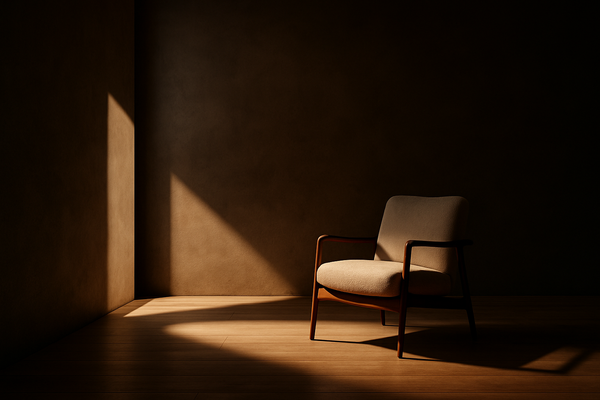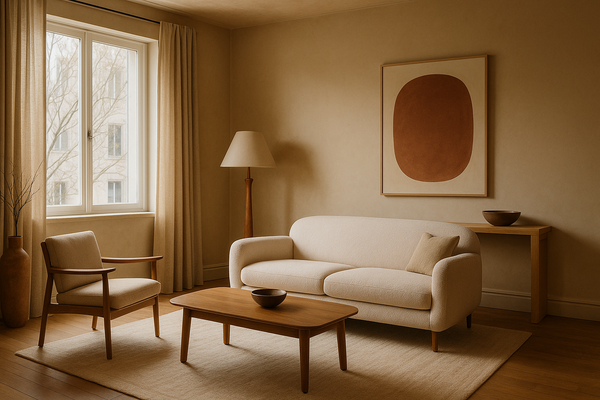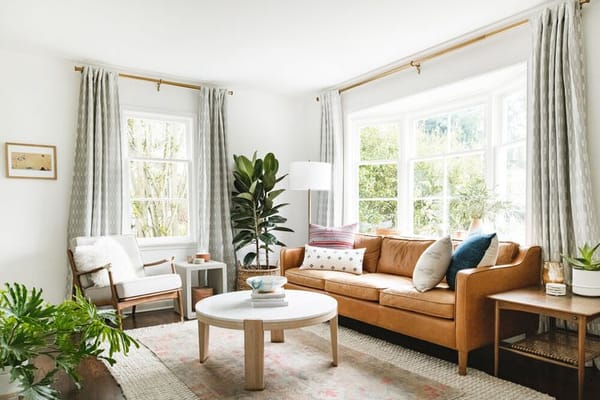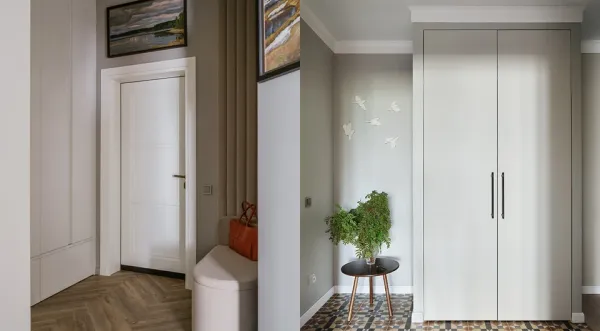Lesson 2: The 3 Core Interior Styles Every Beginner Must Know
Confused about your interior style? This lesson breaks down the 3 core styles every beginner must know - Modern, Traditional and Transitional. So you can decorate your home with confidence and clarity.

Why does choosing a Style matter?
When people first start decorating their homes, they often feel confused. So many styles. So many options. Pinterest says one thing. Instagram shows something else.
You like one room, but not the next. You try to mix ideas, and it just doesn't feel right.
Here's the truth: most beautiful homes are built on just three base styles. Modern, traditional, and transitional. These are not trends. These are timeless ways to create space, flow, and feeling in your home.
Understanding these three styles will help you.
- Know what fits you best
- Avoid design mistakes
- Build a calm, cohesive home, step by step
Let's explore each one. No difficult words, no design degree needed.

Modern Style: Clean, Open, and Calm
What is modern style?
Modern design is all about simplicity. It became popular in the early 20th century when architects and designers wanted to focus on function and clean lines.
In a modern home, every item has a reason. Nothing extra. The goal is to let the space breathe.
Main Features:
- Straight lines - no decoration, no carving, no heavy shapes
- Open floor plans - rooms connect smoothly
- Neutral colors - white, black, beige, gray
- Natural light - big windows, light curtains
- Natural materials - wood, stone, metal
Example:
A living room with a light wooden floor, white walls, a low gray sofa, one large art piece, and no clutter. Simple. Quiet. Peaceful.

Who loves this style?
- People who want less stress and more space
- People who enjoy clean design and quiet energy
- People who like function over decoration
Common mistake:
Making it too cold. Modern doesn't mean empty. Add warm wood or soft texture to make the space feel human.
Traditional style: Warm, Cozy, Full of Character
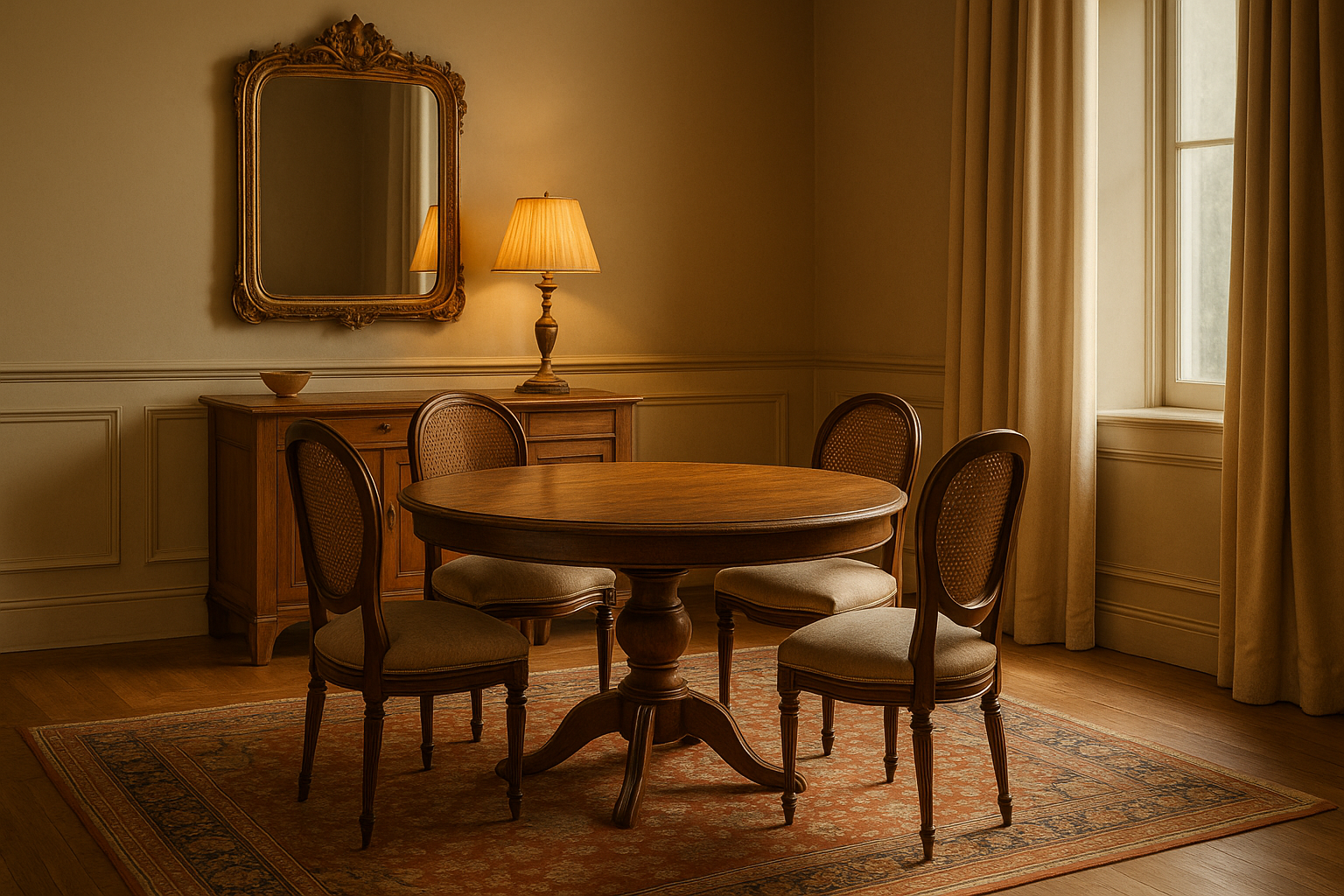
What is traditional style?
Traditional design comes from older European styles. It feels like something that has been passed down. It has layers, rich textures, and often tells a story.
These rooms feel warm and welcoming. They are not afraid of details.
Main Features:
- Classic furniture - curved shapes, carved legs, soft seats
- Layered textiles - curtains, rugs, pillows, throws
- Warm colors - deep greens, reds, navy, gold
- Wall decorations - art, mirrors, trim, or molding
- Wood tones - darker, polished, often antique-style
Example:
A dining room with a round wooden table, vintage chairs, a gold-framed mirror, a patterned rug, and a warm lamp. It feels like family and history.
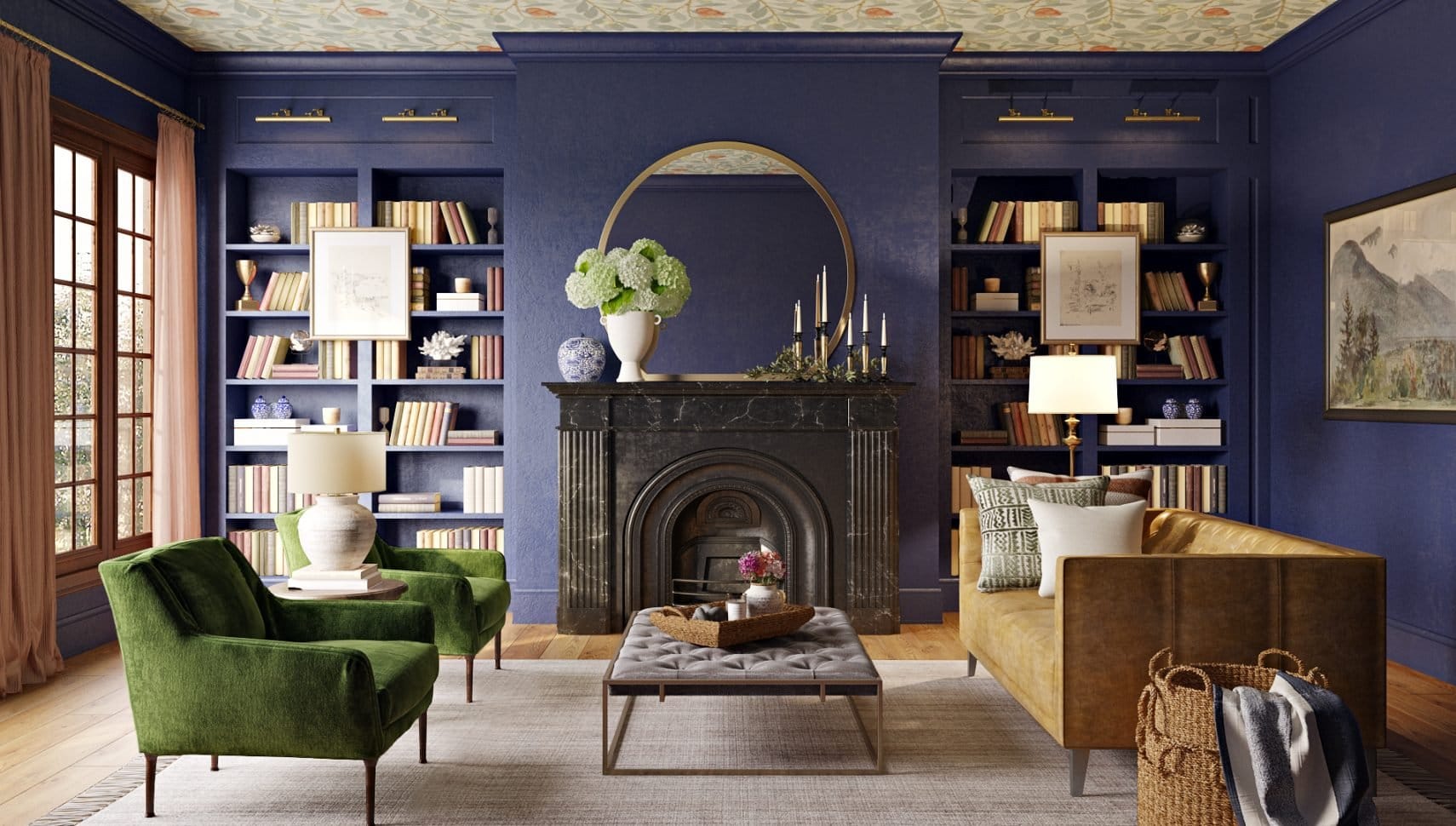
Who loves this style?
- People who like cozy, rich interiors
- People who enjoy antiques or handcrafted items
- People who feel safe with structure and warmth
Common mistake:
Too much clutter. Traditional doesn't mean overcrowded. Keep the balance with light walls or modern light fixtures.
Transitional style: balance between old and new
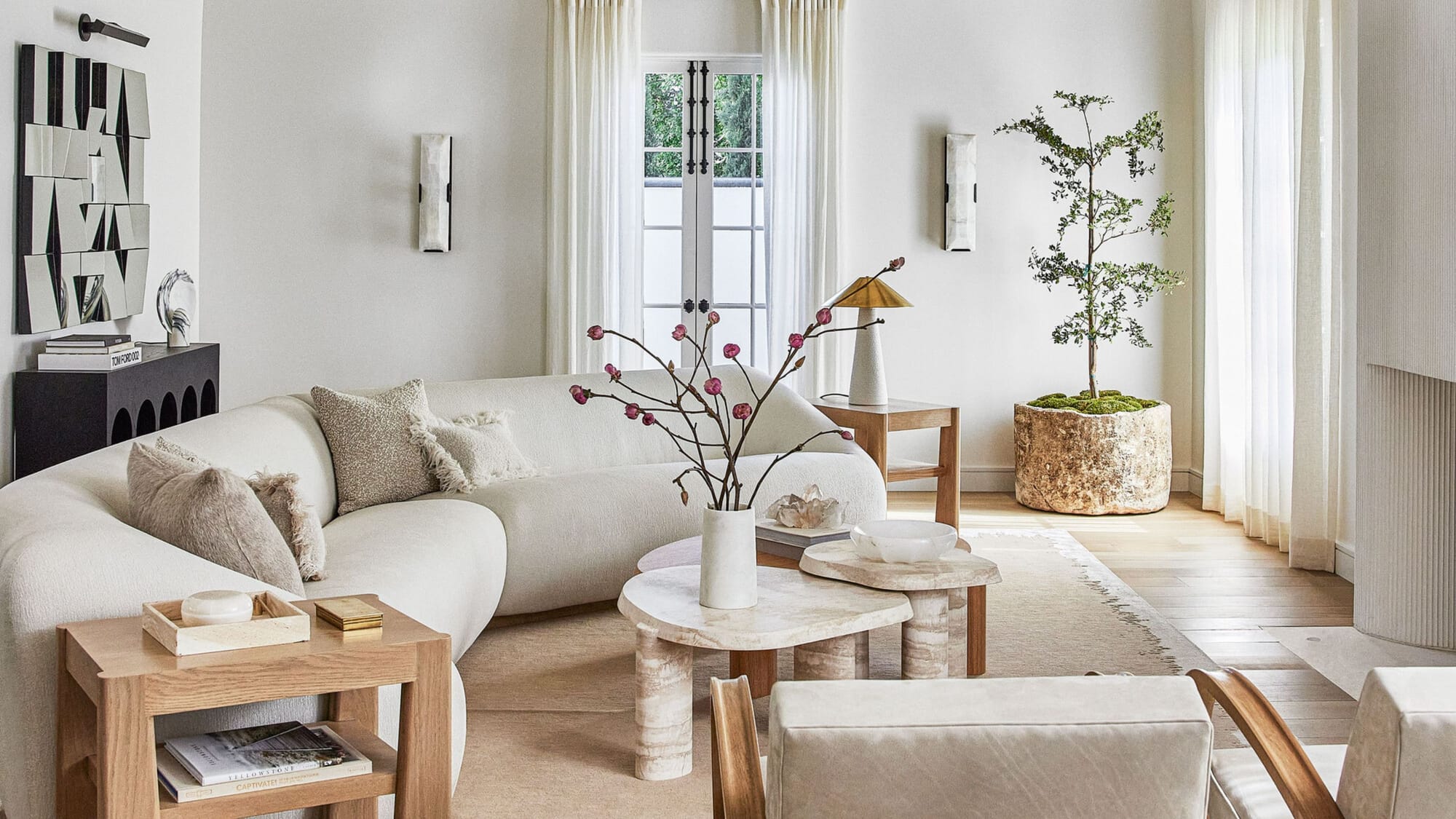
What is transitional style?
Transitional design blends modern and traditional. It's soft, balanced, and perfect for people who like both styles.
You'll often see clean lines and soft shapes together. The room feels calm and fresh, but not empty.
Main Features:
- Natural base - white, cream, gray, soft beige
- Mix of textures - smooth wood, soft fabrics
- Classic touches - maybe a tufted chair or vintage light
- Simplified decoration - only what matters
- Warm + cool tones - light walls, warm textiles
Example:
A soft gray sofa with a wooden coffee table, modern floor lamp, simple rug, and one framed artwork. It feels lived-in but tidy.
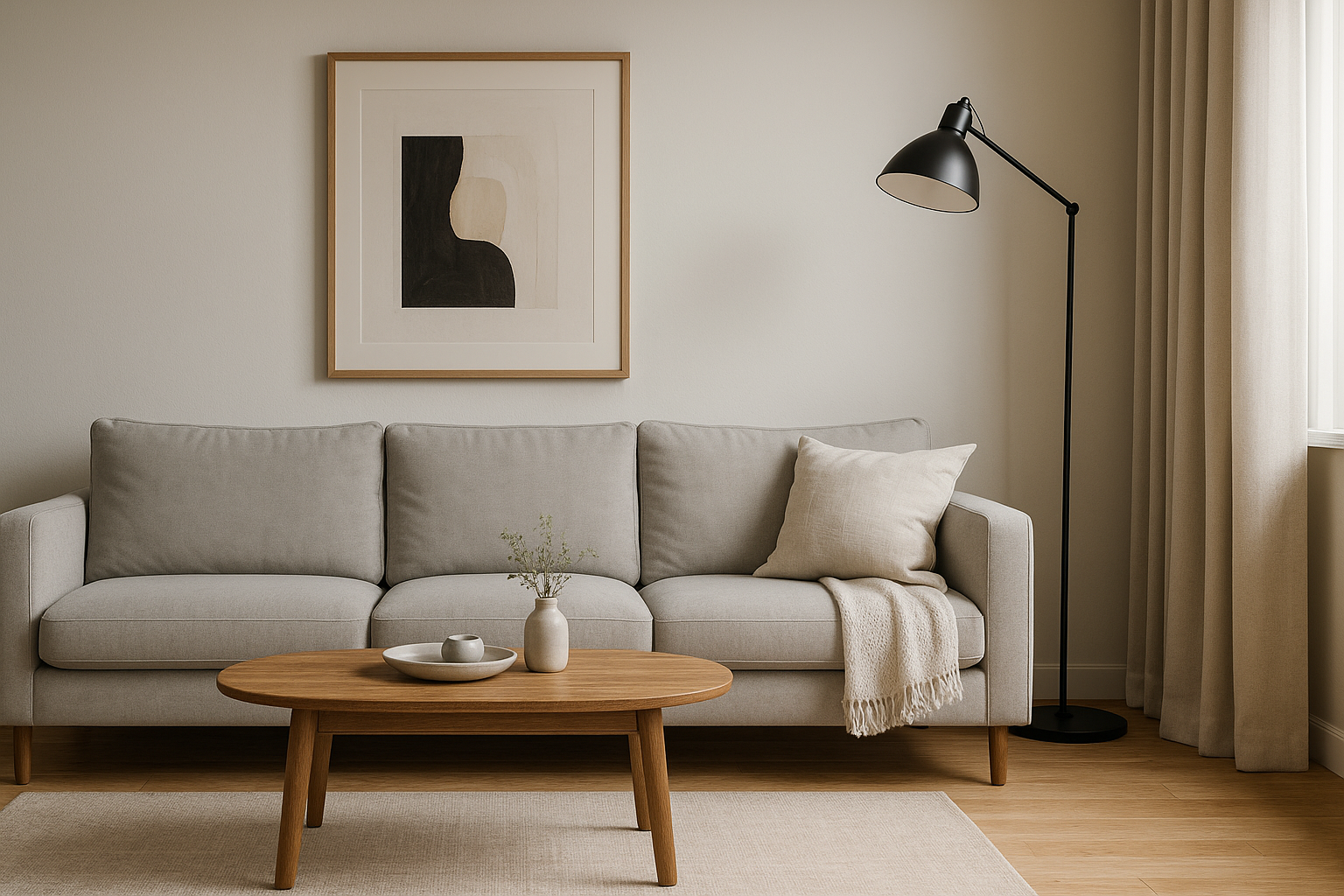
Who loves this style?
People who like balance and harmony
- People who want clean design, but not too minimal
- Families or couples with different tastes
Common mistake:
Losing identity. If everything is too soft and safe, it can feel boring. Add a bold art piece or a standout lamp to anchor the space.
Comparison table
| Style | Main Feel | Colors | Furniture Style | Who It's For |
|---|---|---|---|---|
| Modern | Clean & open | White, gray, beige | Straight lines, no extras | Minimalists, lovers of simplicity |
| Traditional | Warm & layered | Rich tones, darker wood | Curved, detailed | Cozy homes, antique lovers |
| Transitional | Calm & balanced | Neutrals + soft warmth | Mix of modern & classic | People who want comfort + clean design |
Which style is right for you?
Still not sure? Here are some questions to help:
- Do you hate clutter and love open space? - Modern
- Do you love cozy evenings, bookshelves, and rugs? - Traditional
- Do you want a balance between clean and soft? - Transitional
You don't need to pick just one. But starting with a base will help you make better decisions.
Real World Examples
You live in a small city apartment:
Start with modern, clean lines, fewer items, and open space.
You have kids and want cozy, functional rooms:
Transitional works well, it's practical but still stylish.
You're restoring an old house:
Traditional can bring out its best, history, character,and charm.
How to Mix Styles Safely
You can mix, but do it with care. Here are the rules to follow:
- Choose one main style(70%) and add accents from another (30%)
- Keep your color palette consistent
- Let one material lead (wood, stone, linen)
- Don't mix too many patterns or furniture eras in one room
Last tips
- Start with one room
- Build around function first, then add style
- Use moodboards or interests to stay focused
- Less is more when you're unsure
- Stay calm- your style will grow over time
Interior design should not feel like pressure. It should feel like a slow return home to a space that fits your life, your taste, and your peace.
These 3 styles give you a strong base to start with.
Next lesson, we'll explore Scandinavian design, one of the most loved minimalist styles in the world.

